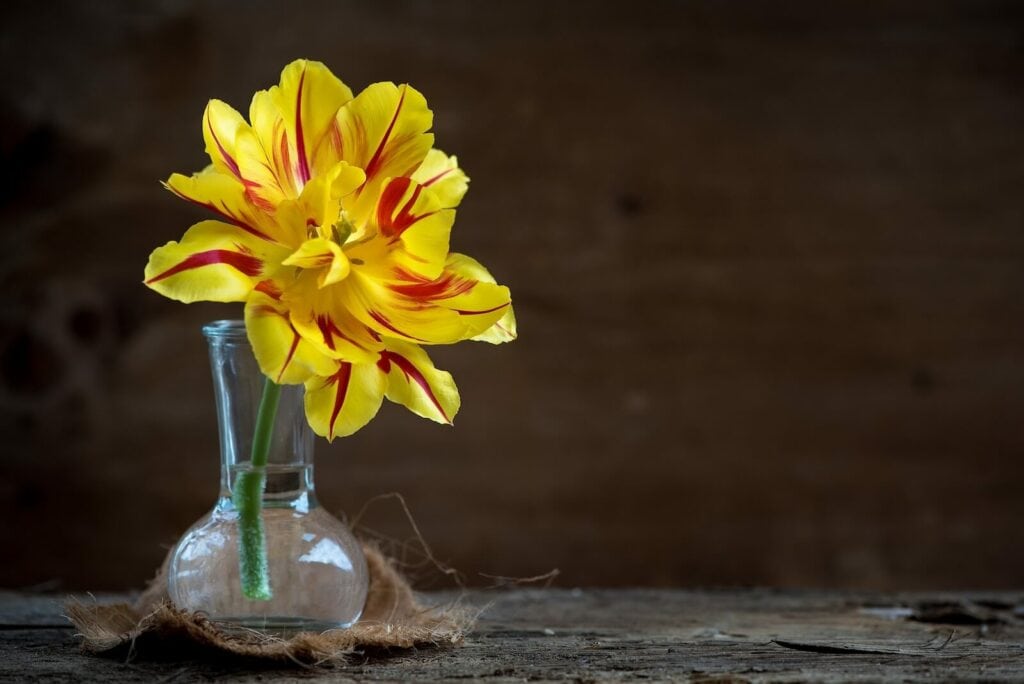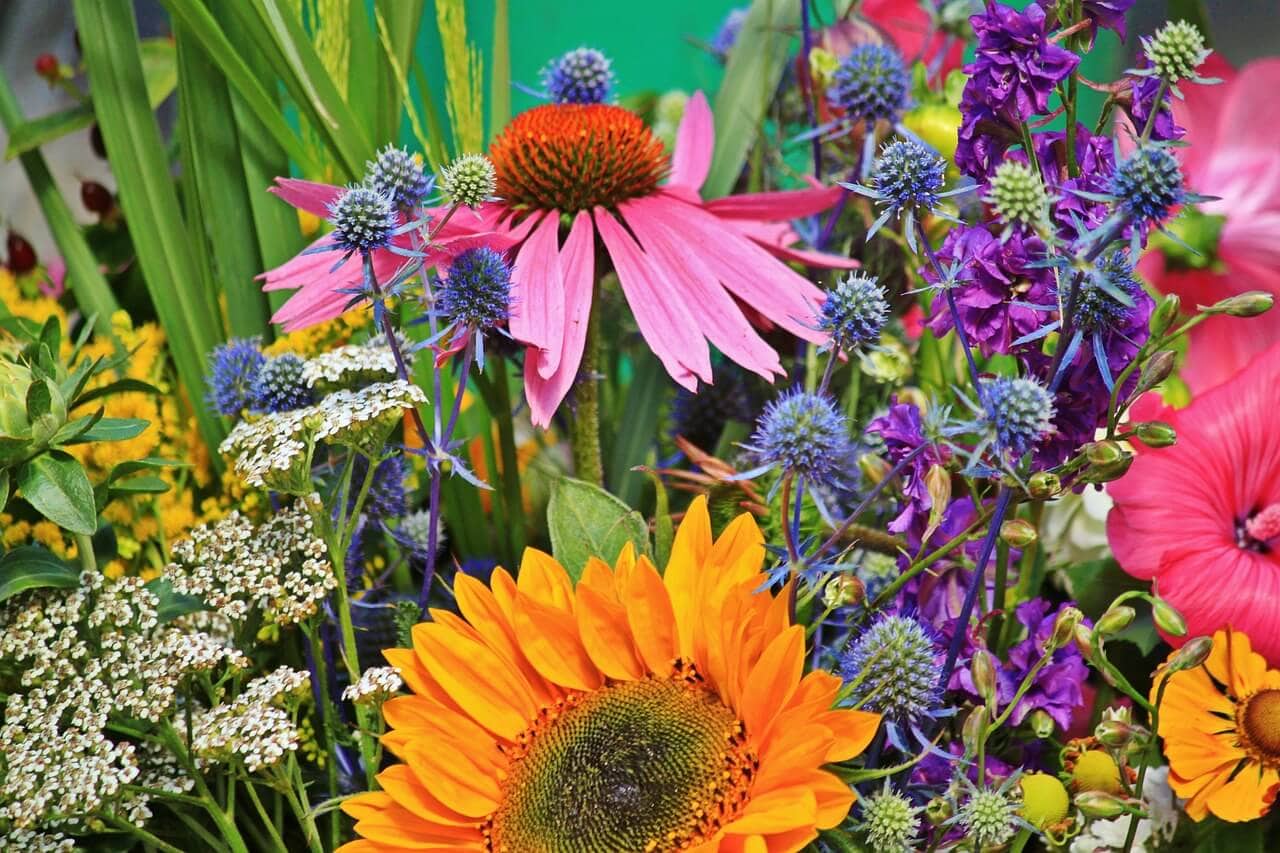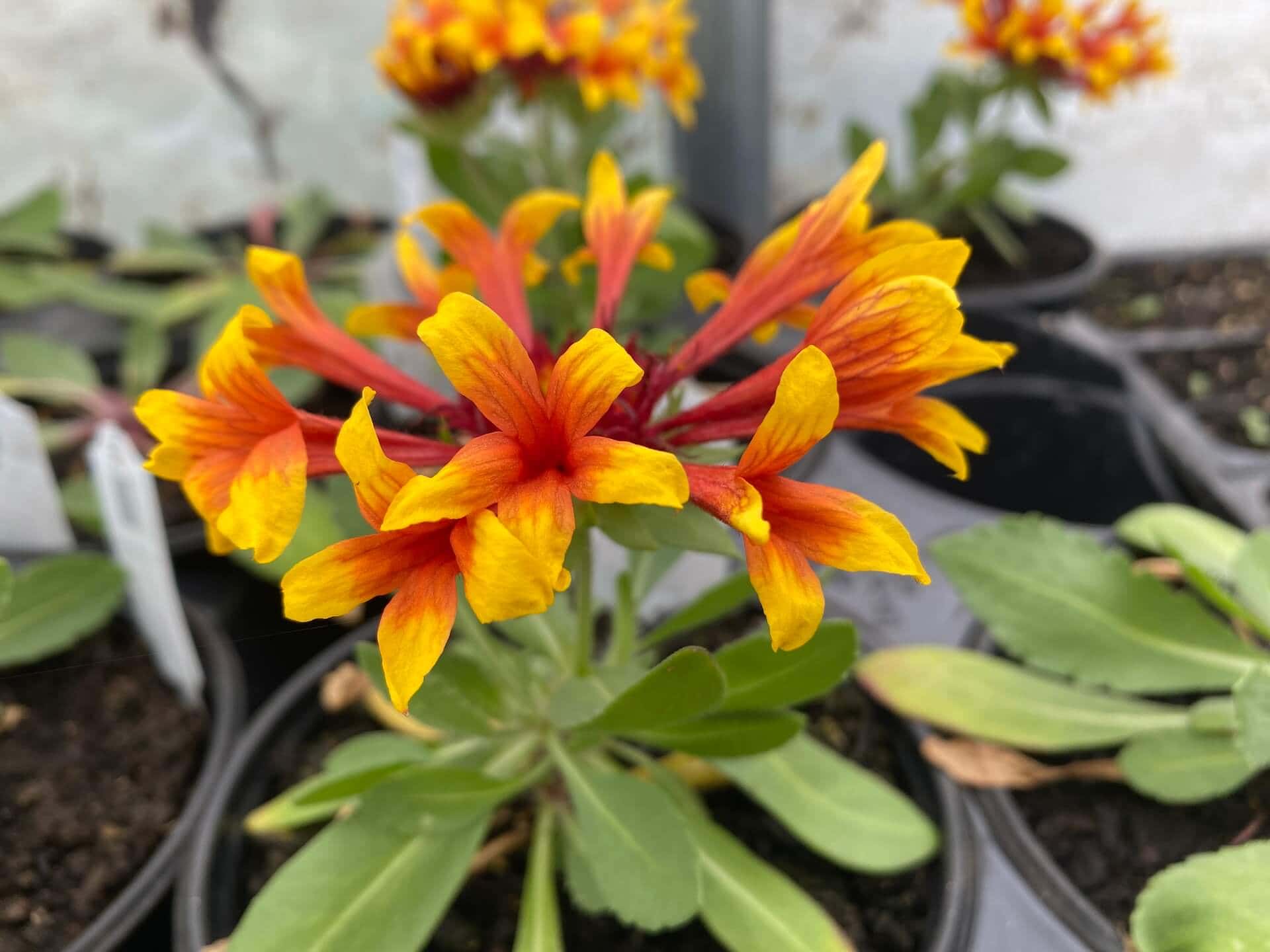This post may contain affiliate links. Probably doesn’t, but it might. It doesn’t cost you anything extra but if you use these links to buy something, we may earn a commission.
Spring is the time when gardeners are full of optimism. You feel like everything can and will grow, the flowers are beautiful and will continue to grow. It’s only when you step back and remember how your plants looked at the end of the summer that it hits you how challenging it can be to keep your flower garden looking beautiful through the whole season.
How can you set your garden up for success so that you have gorgeous flowers all season long? You can consider annuals and perennials and often a mix is an excellent way to build your garden. For now, I want to focus on annuals. Here are six points to consider so that you can have a showcase garden every single week.
Table of Contents
Choose the right flowers for the right location

Select flowers that are well-suited to your climate and growing conditions. This is a key point. We are looking at annual flowers right now, as usually annual flowers will keep blooming all season. Notice, I say usually. There are many annuals which are wonderful for part of the season but then wither in the heat. When you know this ahead of time, you can plan your flowers appropriately.
Cape daisies, or osteospermum, are an excellent example. They love the sun, but they also love cool weather. If you have a hot summer, then this becomes a spring only flower for you. If you want a flower that you plant once and leave all summer, then this one is not for you. If you want to change your planting beds seasonally, then this becomes a valuable spring flower.
If it’s a window box that gets full sun all day, you need to select hardy flowers that can handle the heat and drying out. If it’s an area that is mostly shade, then you need to look for the flowers that can handle low light levels.
The reason geraniums, petunias, and begonias are so popular is that they last for three seasons, Plus, they are very forgiving. If you forget to water them and they wilt, a deep watering will generally revive them. There are multitudes of colors and varieties of all the annuals, so check to see what is available in your area.
Soil preparation
Prepare your soil by adding compost or other organic materials. It takes a lot of energy for plants to produce flowers, so you want to make sure that there are enough nutrients in the soil for the plants to continue to produce flowers. Compost is one of the best fertilizers that you can use. Made up of decayed vegetable matter and aged manure mixed with dried leaves and other brown matter, compost has all the ingredients to keep your plants healthy and happy. Have mulch ready once you have your plants in the ground.
Clean out any volunteer weeds. Make sure the soil is loose and crumbly so that the young plants can easily send out roots through the soil.
Planting methods
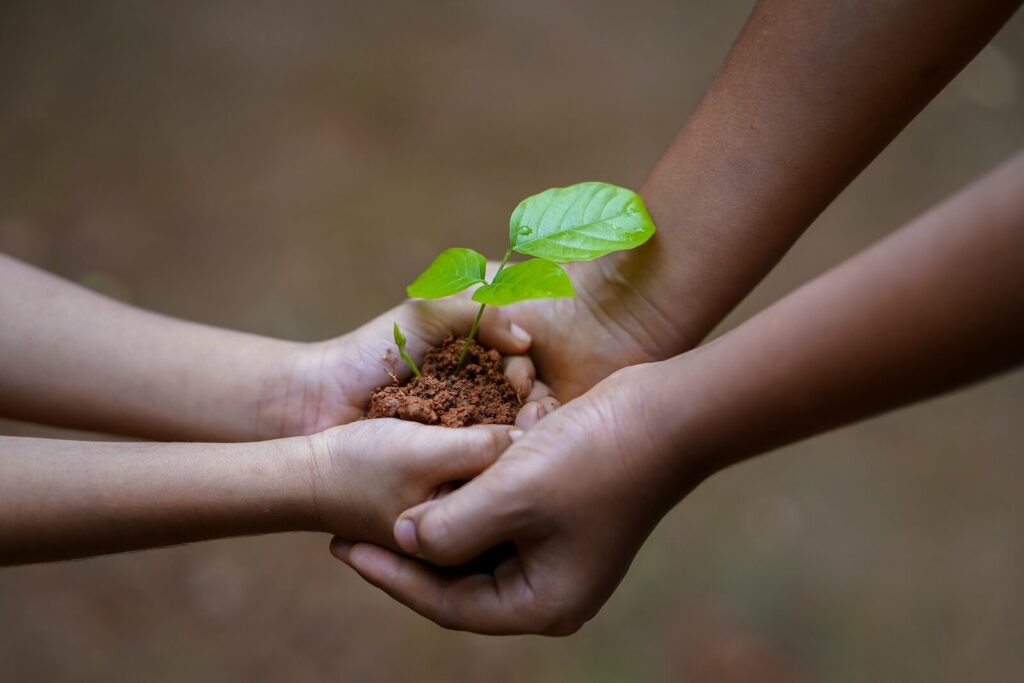
How deep and how wide are the two main questions here. If you have bulbs, then proper placement (root side down) is key as well as how deep to plant the bulb. For plants in a pot, you want the hole to be about twice as deep as the pot and twice as wide. Loosen the roots so that they can spread out and grow out and down, not around in a circle. Now is the time to mix some compost with the soil, about one-third compost and two-thirds soil, to help feed your plants. Be sure to space the plants to allow them room to grow. The plant tag should give you spacing information.
Avoid too shallow planting for plants. Make sure the roots are fully covered. Most plants benefit from a shallow layer of mulch around the main stem after planting which helps suppress weeds and helps retain water.
Watering
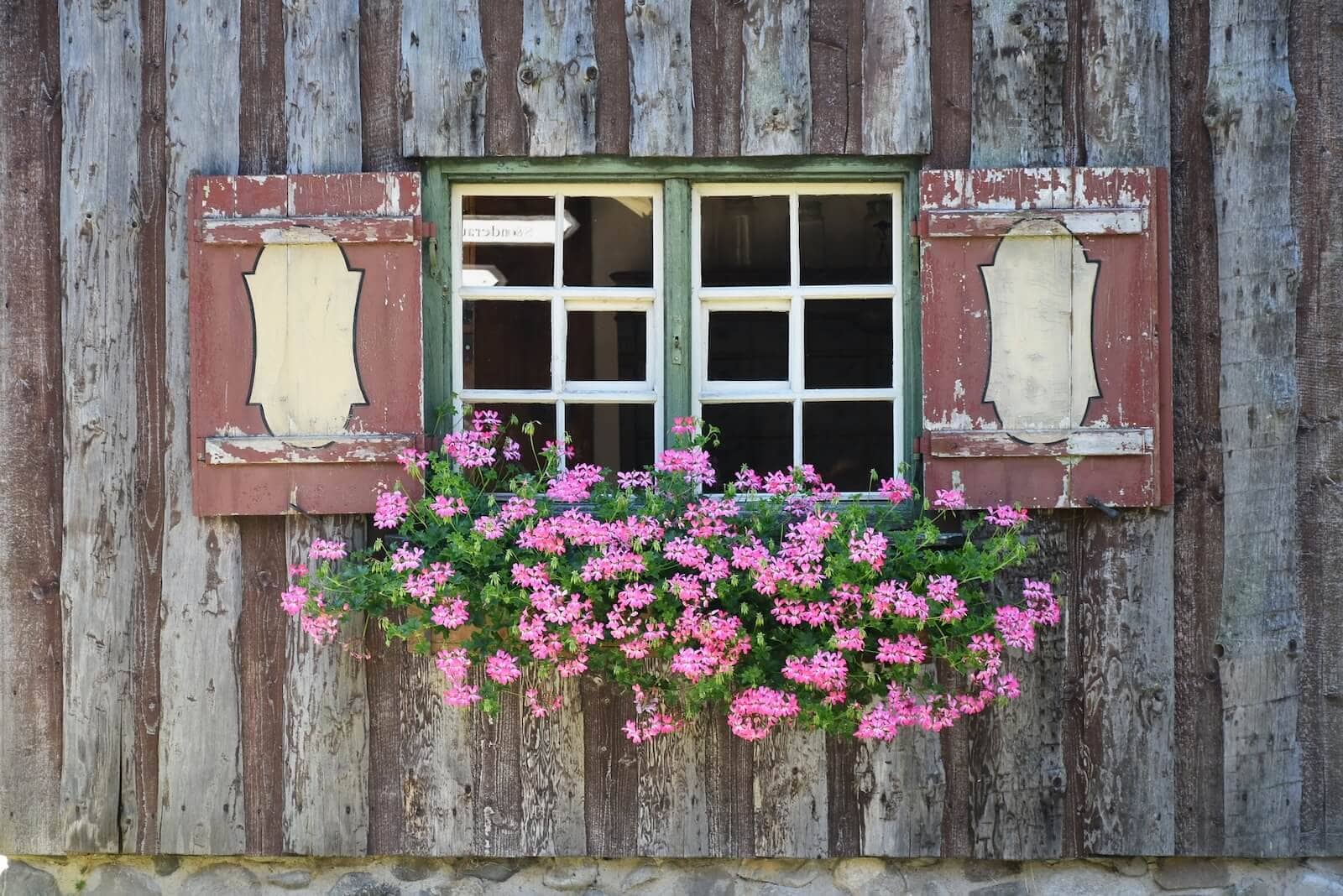
Water as soon as you get your plants in the ground. Going from pot to ground is a bit of a shock to the plant’s system, so it needs sufficient water to avoid transplant shock. It is important to know how much water your plants need. Since creating flowers takes a lot of energy, your plant needs to be in good shape to produce flowers. If it dries out to the point where it wilts, then it will not be able to produce flowers very well. Consistent water is essential, but what that means depends on the plants. Some plants, like geraniums, like to dry out in between watering. Others, like tuberous begonias, like to stay slightly moist regularly.
Flowering plants in containers need water regularly, In hot weather that can mean daily or even twice a day for hanging baskets or smaller containers.
Fertilizing
A fertilizer is important for plants to continue producing flowers. If you start with some compost in the soil, you will not need a lot of additional fertilizer. Mid-season, add a granular fertilizer which is sprinkled around the base of each plant. This will dissolve when the plants are watered or when it rains. There are also liquid fertilizers which you can hook up to your watering hose and add the fertilizer with the water.
For plants in containers, it is essential to fertilizer each month. Otherwise, you wind up with foliage but no flowers. You can use a granular fertilizer, plant spikes, or a liquid fertilizer. Make sure the fertilizer goes into the soil and not on the leaves. The plant absorbs the nutrients through its roots.
You will often see three numbers, such as 5-7-5, which refers to the ratio of nitrogen, phosphorus, and potassium. You want one with a higher phosphorus number—the middle number—as that gives your plants a healthy root system. Nitrogen is for the leaves and potassium or potash is for flower productions.
Follow the directions carefully for any fertilizer. Too much can cause burning on the roots.
Deadheading
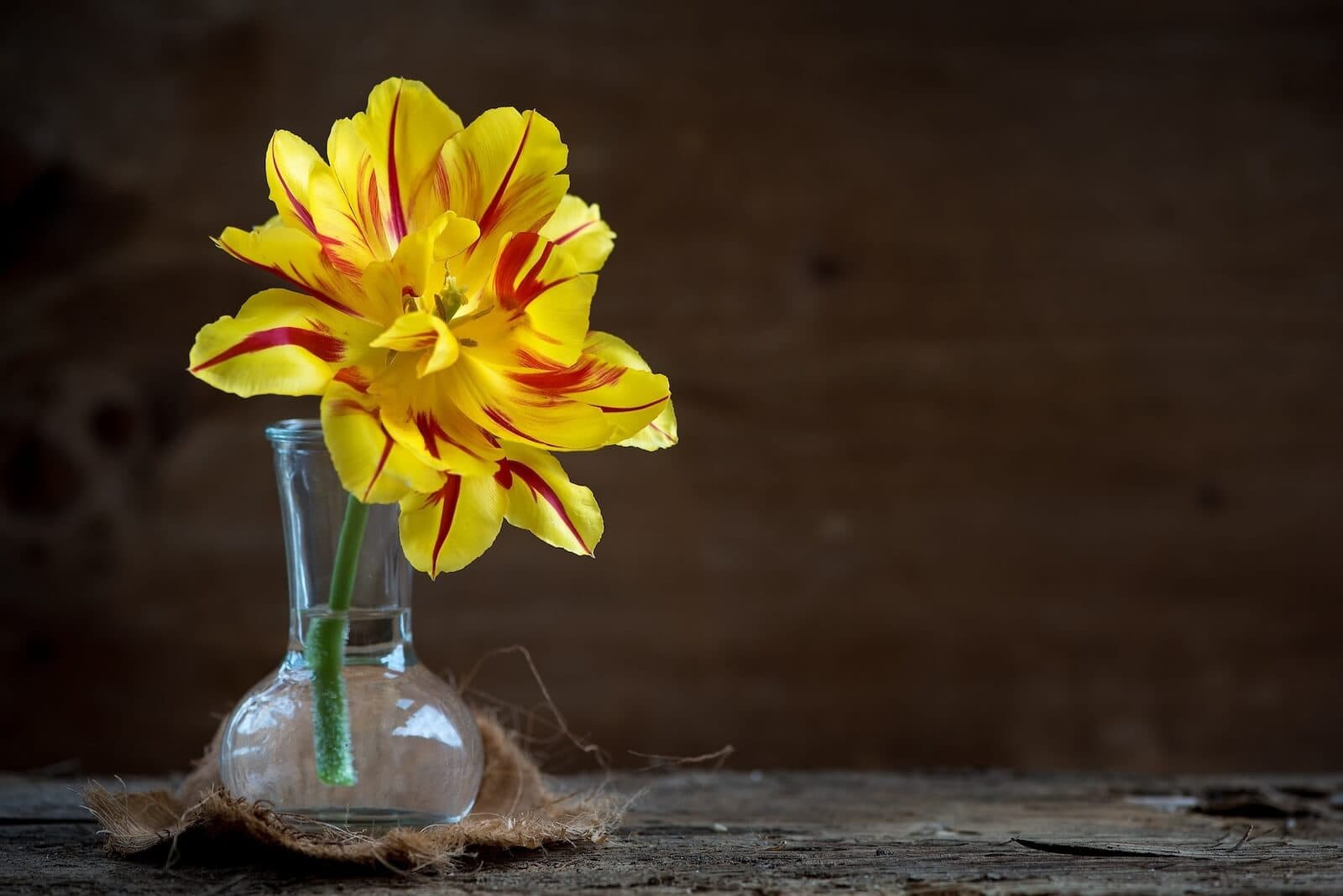
Before the flowers get to the finished stage, cut them for a mini bouquet. Short stemmed flowers can float on a water surface of rest in a small vase. If you leave the flowers on the plants, remove any old blooms from the plant to encourage it to put energy into producing new flowers. The more you cut the flowers, the more flowers you will have on your plant. Your plant’s goal is to produce flowers and then drop seeds to reproduce for the next year. Once it has done this, the plant says, Mission accomplished! And it is done. Often the plant will go dormant or simply die. You want the plant to continue through the season until you are ready to be done. Keep removing any spent blossoms so that the plant keeps blooming.
Pests and Diseases
Keep an eye out for pests and diseases that can affect your flowers. This is part of selecting the right plants for your area. If a flower is susceptible to powdery mildew and you have very humid growing seasons, this is not a good match. If you never get rain during the summer and you are away a lot, flowers that need daily watering are not your best bet. Some flowers are more susceptible to diseases than others. Be prepared to help the plant with environmentally friendly pesticides or fungicides if needed.
Most pests can be avoided by providing a few key ingredients. First is adequate air flow; do not crowd your plants!
Second factor in avoiding pests is not too much water. Moist, hot, humid environments are the perfect breeding grounds for most insects. Keeping the water just at the level needed and applying directly to the plant helps keep the bugs away.
The third factor is removing any dead flowers from the garden bed. Put them in a separate area where they can break down into compost.Your fourth weapon in the battle against the bugs is to use some of the insect deterrent plants such as marigolds, dill, nasturtiums, basil, and allium to help keep the bugs away.
Your fourth weapon in the battle against the bugs is to use some of the insect deterrent plants such as marigolds, dill, nasturtiums, basil, and allium to help keep the bugs away.
Number five is using beneficial insects to get rid of the bad bugs. Lady bugs and assassin beetles are the best known, but there are many beneficial insects which can help keep your flower garden clean. Avoiding any sprays, even organic treatments, is always a better option.
Seasonal maintenance
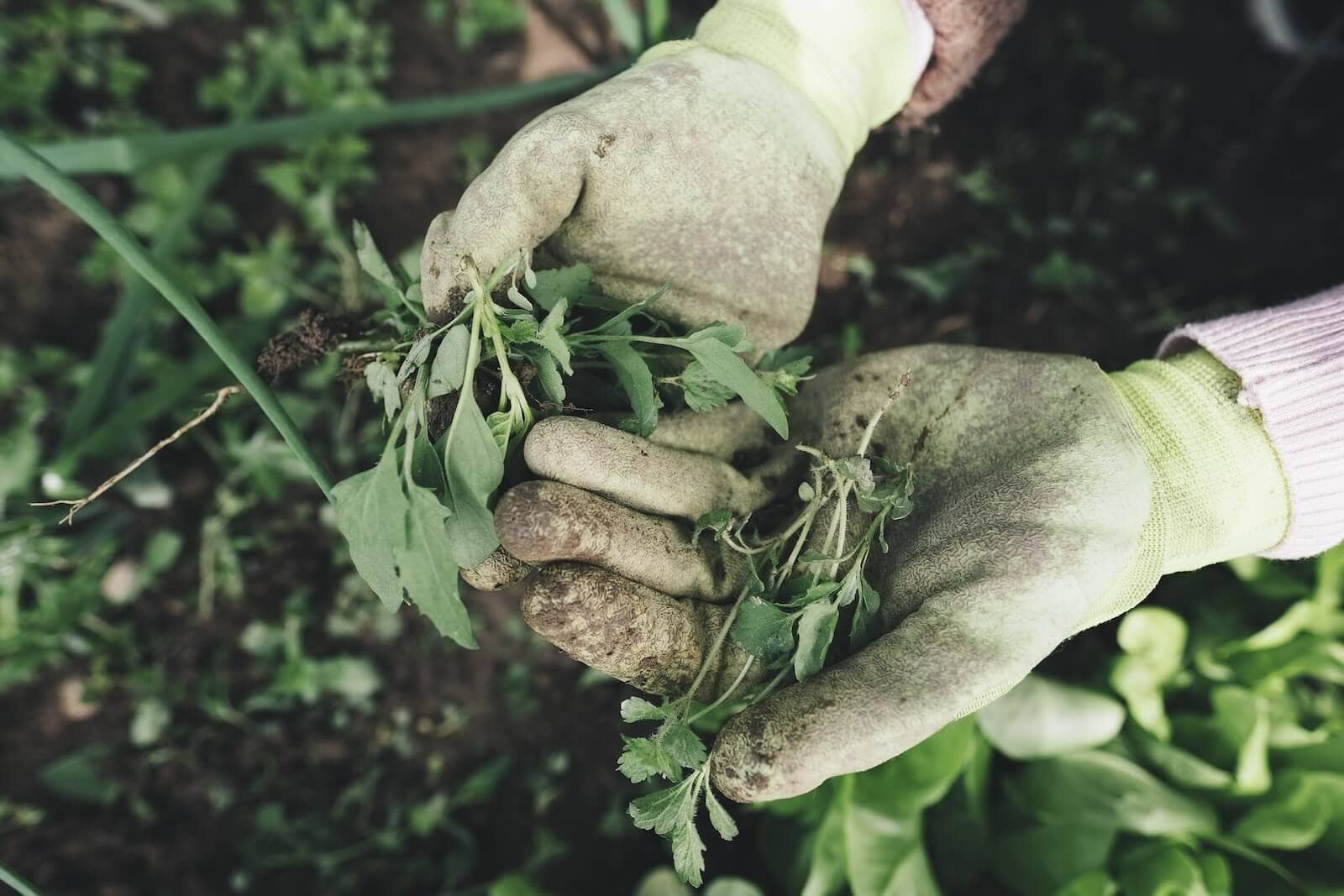
Be prepared to spend time on maintenance tasks such as weeding, mulching, and pruning. This will help your plants stay healthy and vibrant throughout the whole growing season and give you the garden that’s the envy of the neighborhood. Gardening is good for calming your mind and exercising your body, so put garden maintenance on your schedule.
A Good Source for Plants
You do better when you start with healthy plants that grow well in your area. Where should you get your plants? If you are starting seeds yourself, then you are all set. If not, look for growers who understand the seasons and the nuances of how plants grow.
You want growers who grow these flowers themselves, so they know exactly how these plants grow in your climate.
When you find a grower who has been growing flowers for over ten years, then you know there is genuine experience behind their words.
Look for display attendants who can help you with selecting the right plants for the right location. Do they understand the life cycle of the different flowers?
How were the flowers grown? Do they have pesticides on them? If you want to use the flowers for garnishes, in cut flower bouquets, or to attract pollinators to your garden, you want flowers that have not been sprayed? Do you have children or pets who may sample the flowers? Exercise caution, as a small amount of pesticides can do a large amount of damage to a smaller body.
If you do an online search for “flower plants near me,” Google may give you some florists as well as garden centers. A search for “garden centers near me” will give you more specific results. Often, if you are looking for volume in your plants, it is worth expanding your search to a nursery or garden center that is a bit of a distance where they may have an expanded selection and volume discounts. Make sure you have space in your vehicle to get all the plants home! It’s easy to start adding flats and baskets of flowers to your order. Often, your local farm market also has flowers, so be sure to check there as well.
One more thing…
If you are near Wilmington, Delaware, then we welcome you to check out the flowers at our farm market by visiting the farm in Delaware. If you are not near us, then I encourage you to find a farm in your community and to support your local farmer. Thank you for your interest and support of local sustainable agriculture!
Sign up for our weekly email for insider notes on fruits and vegetables, flowers, and farming.
About Highland Orchards: Completely surrounded by suburbia, our small farm has been growing beyond expectations since 1832 in this location.
Growing a wide variety of fruits, vegetables, herbs, and flowers, Highland Orchards provides true “farm fresh” for the community all year. If you want to shake the hand of the farmer who grows for you, here is the farm! With plants in the ground or under cover in tunnels, we grow for every season. A family farm, we have three different generations involved in running the farm right now.
Come see us for all kinds of plants.
Happy growing with your local farm!
~Ruth
Additional resources:
The world of fertilizers is large and confusing. For a deeper dive into flower fertilizers, I recommend this blog from They and Garden: https://theyardandgarden.com/best-flower-fertilizers/. They have some specific recommendations that you can explore.
If watering causes you a lot of anxiety—how much, too little, too much—then check out this “pay what you want” course on watering plants: https://greenthumb.samcart.com/products/all-about-watering/.
If you have been bothered by a lot of pests on your flower plants and want to know more, here is a blog on the seven most common pests for your flower garden: https://www.thespruce.com/flower-garden-pests-1316110.
For more information on using beneficial insects to deter pests, here is a blog: https://highlandorchardsfarmmarket.com/beneficial-harmful-insects-in-your-garden/.
